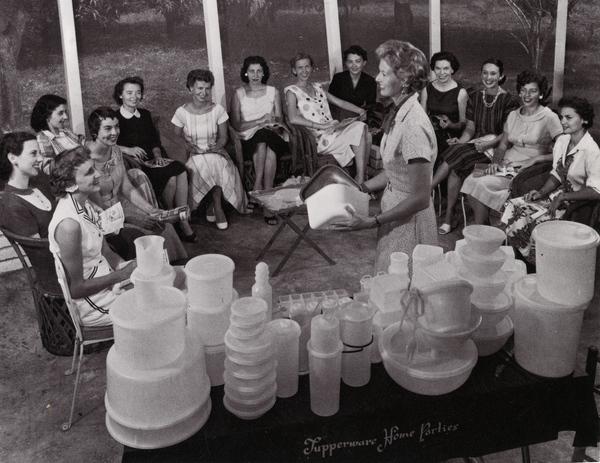
In June, in celebration of pride month, members of LGBTQ+ communities and allies honored and reflected on hard-fought advancements for queer people, from civil rights like marriage equality and employment protections, to representation in positions of political prominence and mainstream culture. One area of change is the rising popularity of drag — an artform pioneered by queer people of color in clandestine ballrooms, now occupying prominent positions in gay bars, television competition programs, and mainstream films.
Drag began, like many parts of queer life, underground in urban nightlife spaces. In queer havens like San Francisco and New York City, drag performers have graced nightclub stages for over a century. As homosexuality grew more visible in the late twentieth century, drag performers were at the forefront of battles for liberation, political rights, and, later, for medical treatment during the years of the AIDS pandemic. In the 1960s, drag queens in Los Angeles and San Francisco pushed back against run-ins with law enforcement. Some in the queer community believe a drag queen, Marsha P. Johnson, threw the first brick at the Stonewall Inn in 1969, kicking off the now-infamous confrontation with the NYPD. In the years that followed, drag queens blended campy performance with activism, protesting governments unresponsive to those dying from AIDS, drug manufacturers, and anti-same sex marriage advocates.
Today, in light of the LGBTQ+ community’s social, political, and legal advances, drag enjoys an unprecedented prominence in mainstream culture. Drag Story Hours, where performers, or queens, read storybooks to children are commonplace in schools and libraries in twenty six states and Puerto Rico. Performing drag, once a marginalized profession, is now a viable, if precarious, job prospect. The RuPaul’s Drag Race franchise boasts thirteen seasons (with six All-Stars seasons to boot) as well as international spin-offs in seven countries. The cultural significance and prominence of drag today raises questions: How does drag celebrate queerness and resist normative sexuality? How did drag find its footing in both pop culture and political circles? Significant research in the humanities and social sciences sheds light on this.
- Jeffrey Bennett and Isaac West. 2009. “‘United We Stand, Divided We Fall’: AIDS, Armorettes, and the Tactical Repertoires of Drag”. The Southern Communication Journal 74(3): 300-313.
- Leila J. Rupp and Verta Taylor. 2003. Drag Queens at the 801 Cabaret. Chicago: University of Chicago Press.
- Benjamin Shepard. 2010. Queer Political Performance and Protest: Play, Pleasure, and Social Movement. Routledge.
Performing Gender
Gender theorists have argued that gender is a performed identity, reproduced in daily social interactions. Like other social categories, gender is shaped by, and reshapes, relations of power. Drag involves stylistic and exaggerated gender performance. Drag queens were initially male-identifying performers who, unlike “crossdressers,” relied on exaggerated and parodied gender performance to both entertain and draw attention to political causes. Given the queer community’s social exclusion, drag performers have for decades formed closely knit communities, or “houses”, of mutual support and solidarity for performers often cut off from traditional familial networks.
- Gregory Phillips II et al. 2009. “House/ball culture and adolescent African-American transgender persons and men who have sex with men: a synthesis of the literature”. AIDS Care 23(4):515-520.
Subverting Gender: Transgressive Tactics
Drag’s most enduring social impact has been calling into question popular conceptions of gender. Drag draws attention to the important differences between sexual orientation and gender, as well as internal gender identity, external performance, and biological sex, topics of ongoing discussion in academic and activist communities.
Drag queens use cultural tools like language and physical appearance to subvert and perform gender identities. Through parodying and imitating mainstream gender norms, drag queens reveal the arbitrariness, cultural origins, and performance inherent to all gender identities. In these communities, queens have developed coherent group identities by creating particular speech patterns and unique cultural cues. Values like not being too competitive or “hungry,” maintaining “sisterhood,” and exuding professionalism and humility are reinforced through language and cultural norms. Drag entertainers draw on appearances and practices situationally, in some cases displaying feminine sides in interactions with men while reverting to their masculinity in situations that call for it. Lesbian drag kings – female identifying performers presenting as men – similarly subvert gender roles by drawing on masculine practices in performance and, in some cases, more feminine practices in intimate settings.
While drag’s prominence today has prompted debates on gender norms in the mainstream, it has, at the same time, led to criticism about some harmful aspects of drag performance, including caricaturing racial minorities and marginalized groups.
- Inside the Minstrel Mask: Readings in Nineteenth-Century Blackface Minstrelsy. 2018. Annemarie Bean, James V. Hatch, and Brooks McNamara, editors. Wesleyan.
- Nathaniel Simmons. 2014. “Speaking Like a Queen in RuPaul’s Drag Race: Towards a Speech Code of American Drag Queens.” Sexuality and Culture 18:630-648.
- Kate O’Halloran. 2017. “RuPaul’s Drag Race and the Reconceptualization of Queer Communities and Publics”, in RuPaul’s Drag Race and the Shifting Visibility of Drag Culture. Niall Brannan and David Gudelunas, editors.
- Steven P. Schacht. 2003. “Lesbian Drag Kings and the Feminine Embodiment of the Masculine.” Journal of Homosexuality, 43:3-4, 75-98
Art Form as Resistance
Since drag first became a commonplace – if clandestine – staple at gay bars and clubs, the performances involved an inherent critique of dominant gender norms, presentation, and behavior. This resistance owes much to the repression and marginalization queer performers have faced in many aspects of their lives. Homophobic views often forced performers out of their homes, leading them to build bonds and kinship networks with other queer people in more accepting urban locales. Under precarious conditions, performers build community with other marginalized queer individuals and crafted a trangressive art form now seen as a cultural staple. Drag’s rise would not have been possible with changing gender norms and styles of self-expression. Birth control became publicly available in 1960, opening new possibilities for women beyond the home. In the postwar decades, artists like Esquerita, Little Richard, and Sylvester pushed the limits of accepted gender presentation, normalizing new portrayals of gender. norms in their revolutionary performances., Cultural change was already well underway by the time the Stonewall riots kickstarted the national queer liberation movement. While evolving gender norms and the cultural movements of the 1960s did help the cause of queer liberation, fractures among LGBTQ+ activists kept drag remained in a marginal position within the movement.
- Better Luther Hillman. 2011. “”The most profoundly revolutionary act a homosexual can engage in”: Drag and the Politics of Gender Presentation in the San Francisco Gay Liberation Movement, 1964–1972”. The Journal of the History of Sexuality 20(1): 153-181.
- Ragan Rhyne. 2004. “Racializing White Drag”. Journal of Homosexuality 46(3-4):181-194.
- Leila J. Rupp, Verta Taylor, and Eve Ilana Shapiro. “Drag Queens and Drag Kings: The Difference Gender Makes”. Sexualities 13(3): 275-294.
- Nishant Upadhyay. 2019. “‘Can You Get More American Than Native American?’: Drag and Settler Colonialism in RuPaul’s Drag Race”. Cultural Studies 33(3): 480-501.










